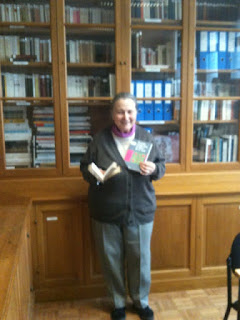My eyes, with bilateral congenital coloboma.
(Photo by James Kent)
When I was about 14, my optometrist suggested that I might like to wear cosmetic contact lenses to make my eyes look like everybody else's. Even as an image-conscious teen I was instinctively appalled by the idea. It felt a lot like hiding, that I would be at once denying the reality of who I was, and acknowledging that I felt ashamed or embarrassed about the way I looked. I refused and the matter was dropped. Now I wonder whether the implications of that offer were perhaps more sinister. Would the contact lenses be for my benefit or the benefit of those around me? Sure, they might reduce the number of upsetting comments I received from strangers. I'd have been grateful not to have experienced the pity of the American lady in a hotel in New York in 1989 who stared at me in horror before addressing my parents with a sympathetic 'I'm so sorry'. Or the lady on a French train near Narbonne in 1992 who delivered the devastatingly double-edged 'Sans vos yeux, vous seriez presque belle'. ('Without your eyes you would be almost beautiful'). But was the well-meaning optometrist really thinking about the self-conscious teenager trying to make sense of her place in the world? By hiding my eyes behind a pair of big blue contact lenses, I would have been an accomplice in the dissemination of the widespread belief that perfection is better than imperfection, the normal better than the abnormal. These contact lenses would have been purely cosmetic. They would not have changed the way I see, only the way I look. They would have made me less aesthetically offensive to strangers encountered on trains or in hotels, allowed me to 'pass' as a completely sighted person.
The only way of challenging the myths about superficial perfection which govern our society and which the optometrist's offer reveal is to expose people to difference in a non-negative way. At the age of 14 I only had a very dim sense of why wearing contact lenses was wrong. Now I see that it is important not only to show people how my eyes look, but to show them that I am happy with how they look. That I wouldn't change them even if I could. That although big blue eyes are beautiful, they only represent one interpretation of beauty.






